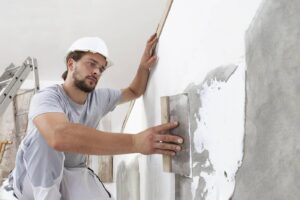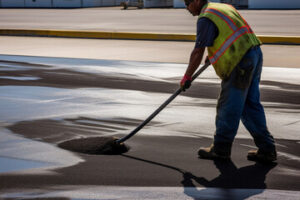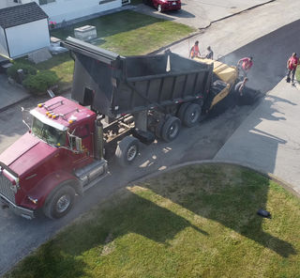Dryvit Stucco Installation is a beautiful, durable, and functional way to upgrade the exterior of your home or commercial building. It requires proper wall assembly and moisture protection to minimize cracking.
If your walls are sheathed with wood, you must apply a water barrier and metal lath before stucco. If they are masonry or brick, you can skip the waterproof paper and metal lath.

Scratch Coat
The scratch coat is the first base coat that goes on a wall. It is made up of sand, cement, and water and it’s applied to the walls at a thickness of about 3/8 inch – 1/2 inch. It’s important to get this coat right because it’s what provides the surface for the brown coat to adhere to. A scratch coat is also what makes a stucco wall look rough like it was hand plastered.
It’s a good idea to dampen the surface of the wall before applying a scratch coat so that the mix sticks to it. There are a lot of different recipes for the mix but it is typically 1 part Portland cement, 1 part sand, and 2 parts water. It is also important to add hydration to the mix, which is usually a form of lime (see the side-by-side comparison of a scratch and brown coat to see what this looks like).
This hydrated lime helps the mix set up quickly and provides a bonding surface for the subsequent layers. It also helps to prevent cracking. Other additives can be added to the mix, such as glass fibers or acrylic strands that strengthen it and make it more durable.
After the scratch coat dries, it’s time for the brown coat. This is a smoother, more attractive, and functional coat. It is hung on the horizontal scratches in the scratch coat and it helps to protect the wall. It also acts as the foundation for the finish coat, which is what makes the final appearance of a stucco wall.
Many contractors will use a one-coat stucco system, which is a combination of the scratch and brown coats, mixed to create a single application that can be used on the entire surface of the wall, including corners, arches, and curved areas. This is an alternative to the traditional three-step stucco application and it can save time and money.
Another type of surface that’s often confused with stucco is EIFS, which stands for Exterior Insulation and Finish Systems. EIFS is a more modern type of wall system that uses foam board instead of lath and wire mesh. It’s often used on commercial projects because it is much faster to install than traditional stucco and it also looks great.
Brown Coat
The brown coat is the second base coat and is a mix of Portland cement, sand, and fibers. It is a thicker application ranging from 3/8″ – 1/2″. It is the matrix into which the double back coat aggregate gets troweled. It can be troweled smooth or a variety of textures are applied over it including French lace, rough cast, and Scottish harl. The brown coat must be properly prepared to achieve a superior plaster job.
Traditionally, the brown coat was rubbed by hand with a hawk and scratch tool. This made a pattern in the surface of the plaster for the finish layer to “key” into. Depending on the texture required, a float was then used to further flatten and compact the material. The float is also what gives stucco its characteristic “stippled” appearance.
In the past, builders used several products to speed up the three-coat process. One such product is a blended Portland cement, sand, fibers, and special proprietary chemicals. This product, which is usually applied over house wrap as an energy code requirement for Continuous Insulated durable cladding, combines the scratch and brown coats in one step. It is applied at a thickness of 3/8″ to 1/2″ and must be properly prepared to achieve a superior stucco job.
For most contractors, the brown coat is the most challenging aspect of the stucco process. When done poorly it can cause problems with the entire system. Unevenly applied finishes are more difficult to make smooth and they often result in clinkering, which is the exposure of the coarse sand in the finish plaster. This can lead to several problems in the future for the plasterer and the homeowner.
It is also important to understand that the brown coat must be cured to ensure that the polyp prep or color coat adheres to it. Consult with the manufacturer’s instructions for proper curing times. This can range from 24 to 72 hours. After the brown coat is cured, a water-based primer should be applied to the wall to enhance adhesion and protect the surface from stains.
Finish Coat
This is the final layer of stucco, sometimes called the ‘ mud’ coat. It is a thin covering about 3/8 inch thick which can be colored and textured for a finished look. It is also a time-consuming part of the process because it requires careful mixing with both a stucco base which determines the texture and a stucco color pack.
Before applying the finish coat, it is important to paint any non-stucco surfaces that will be visible such as wood sidings, window frames, and any other wood fixtures. It is best to use latex paint rather than oil-based paint because it will hold up better with the constant exposure to water that is characteristic of a stucco exterior.
If you are using a traditional three-coat stucco system you will need to apply a scratch coat, brown coat, and finish coat to your home’s walls. A scratch coat is a rough base layer that has lines scratched into it for the next coat to bond to. This layer is usually about 3/8 inch thick and is a necessary step for both wood-sheathed homes and masonry-built structures.
The brown coat is applied over the scratch coat to provide a more even surface for the finish coat to bond to. It is normally about 3/8 inch thick and will be tinted or textured to match the texture of the scratch coat. It is important to keep the brown coat moist while it cures so that it will adhere properly to the underlying layers.
For some projects, contractors may try to speed up the stucco installation by skipping the scratch and brown coats and going straight to the finish coat. This is done by using a pre-mixed stucco blend that is usually a combination of Portland cement, lime, sand, and special proprietary ingredients. These types of products are available in many home improvement centers and can be used to reduce the amount of work needed for a three-coat stucco system.
Some contractors will also use an EIFS (Exterior Insulated Finish System) which is a foam board with fiberglass mesh attached that looks like stucco. This is much faster and easier to install than traditional three-coat stucco but it may not be as durable over time.
Caulking
Stucco cracks can develop from natural settling, temperature fluctuations, and general wear and tear. Left untreated, these cracks can compromise the structural integrity of the stucco wall and lead to moisture intrusion. Caulking is a crucial step in repairing these cracks and maintaining the aesthetic appeal of the stucco exterior.
To ensure proper caulking, the surface must be clean and dry. For best results, it is recommended that you use a non-toxic, mineral spirits-based cleaning solution to prepare the surfaces. Once the surface is ready to be caulked, cut the caulk tube using a utility knife to create an opening that matches the width of the crack. Then, smooth and press the caulk into the crack to achieve a neat finish. Once the caulk is cured, it can be painted to match the existing stucco finish.
When determining the best caulking for your project, consider factors like flexibility, weather resistance, and adhesion. For example, a polyurethane caulk is a good choice for repairing cracks in areas that are susceptible to movement or stress. Its durable construction also offers exceptional abrasion resistance and water resistance, making it an ideal choice for preventing moisture-related damage.
In addition to addressing the cracks, caulking can also help maintain energy efficiency and uphold the beauty and resilience of the stucco. Homeowners who regularly apply caulking can reduce energy losses and extend the lifespan of their stucco exteriors, ultimately saving them from costly structural repairs in the future.
If you’re looking to add a splash of color to your stucco, look no further than acrylic caulking. This versatile option is suitable for a wide range of projects, from small crack repair to refinishing, and comes in a variety of colors to complement your exterior stucco. However, this type of caulking may not be the best option if you’re hoping to use it as a finishing tool, as it’s difficult to blend with the surface.
For projects requiring a more durable caulking, consider silicone caulk. This specialized formula is designed to withstand harsh climates and resist fading. It is a good choice for high-traffic areas where your stucco will come into contact with other materials, such as windows and doors.

